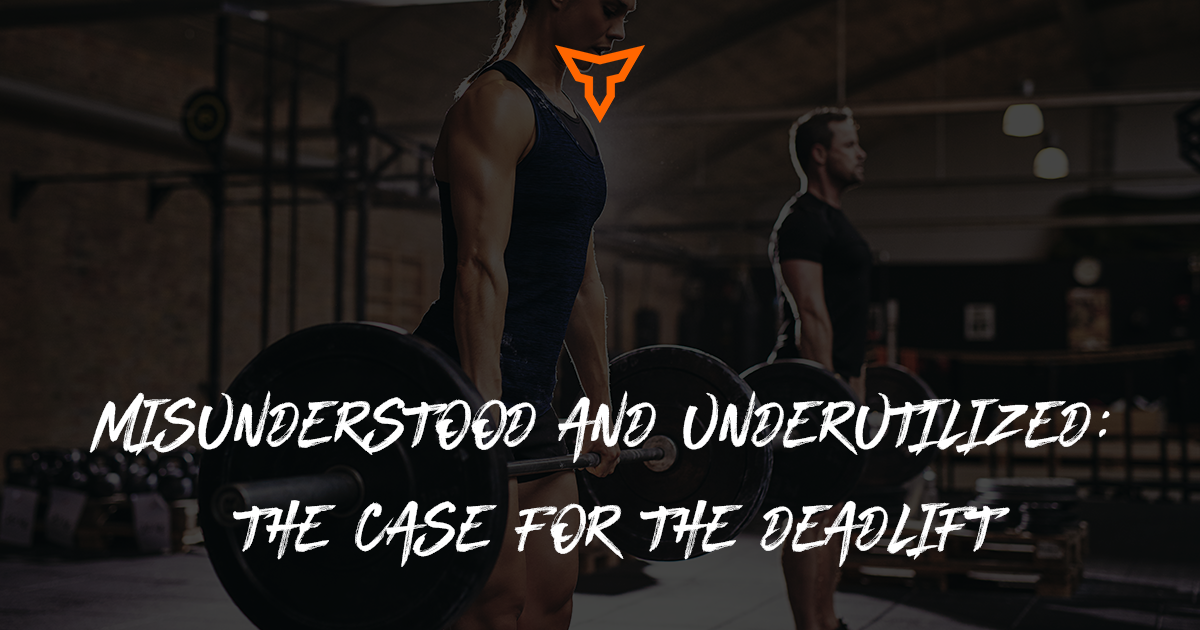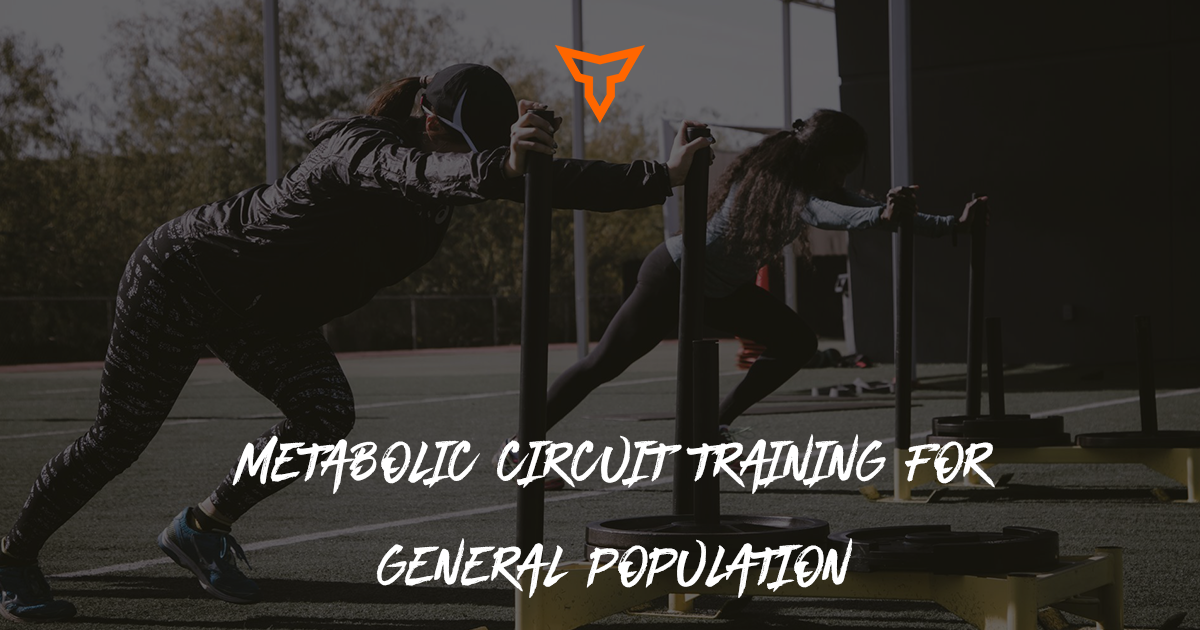Adapting CrossFit Workouts for Tactical Athletes
Whether I was getting an undergraduate degree in exercise science or a master’s degree in exercise physiology, one thing was constantly reiterated to us as students: “Crossfit is bad”. However, the rationale was never properly explained in an educational manner as I went to obtain my Bachelor’s. Now do I think Crossfit has some flaws? Absolutely. This is not a “Crossfit is the best methodology ever” article by any means. However, the fact is, it will be something that most tactical strength coaches encounter at some point in their careers. Instead of digging our heels in the ground against Crossfit, what I hope to give is an in-depth educational critique of the Crossfit methodology and how it can be applied to the tactical setting in an adaptable manner.
What is Crossfit, and why do so many tactical athletes enjoy it?Crossfit came into the strength and conditioning scene back in the year 2000 in Santa Cruz, California, but did not get a ton of public attention until 2008-2009. The methodology consists of metabolic training, gymnastics, strength training, & Olympic movements all in one program. Due to its “tough” nature, the tactical community latched on very quickly to the idea that workouts should be tough. The appeal likely was and is due to the demanding nature of their job’s roles and responsibilities. They even do “Hero Workouts” to honor fallen members of the tactical community. It makes sense that the tactical community would be driven to this style of training due to its big emphasis on comradery, family & community.
As CrossFit grows, it has become inevitable that we as coaches must pivot and adapt to the ever-growing culture and questionable methods over the years. However, most coaches overlook what the sport does really well.
What Crossfit does really well
Crossfit has developed a massive community and culture as it has gained popularity over the decade. This community not only includes members of the tactical community, but everyone. From Olympic weightlifters to stay-at-home moms, the culture has gotten more people away from a sedentary lifestyle and developed competitive programs for all to attend that seem to be very modifiable depending on tenure, skill level, and age. The methodology does a great job bringing back older training and expanding on them. Most of these methodologies I am referring to are:
EMOMs (Every Minute on the Minute)
This method requires the athlete to lift “X” number of reps within a minute time frame. Once the athlete completes the lift, said athlete now has time to rest and recover until the next minute starts.
For example: If I program 2 Hang Cleans as an EMOM and it takes the athlete 10 seconds to complete, then said athlete will have 50 seconds to rest before performing the next set of 2 reps on the minute.
AMRAPs (As Many Rounds as Possible)
As Many Rounds as Possible is where the athlete performs a certain number of exercises at a specified volume with the intent of getting as many rounds as he or she can before the time limit is up.
- AMRAP 25 (As Many Rounds AS Possible for 25 minutes)
- Exercise 1: Sled Push x 50 ft @ 165 lbs
- Exercise 2: Chin-Ups x 6 reps
- Exercise 3: Side Plank R/L x 20 sec each side
- Exercise 4: Assault Bike x12 cal
- Exercise 5: C2 Rower x12 cal
- Track # of rounds: ______
RFT (Rounds for Time)
Rounds for time is where the athlete performs a certain number of rounds of exercises in an attempt to complete the rounds as fast as possible. Normally this methodology is great for competitive athletes due to its fast-paced nature.
- Exercise 1: Devil’s Press x 8
- Exercise 2: C2 Rower x 300 M
- Exercise 3: Dead Bugs x 10 each
Crossfit has also dramatically increased the support for the sport of Olympic weightlifting. Traditionally only weightlifting coaches and S&C coaches utilized these movements to enhance power, speed-strength, and explosive qualities in their athletes. In addition to teaching barbell movements, it has also gained a huge following of female participants. Women used to adhere to the myth that “lifting will make you too big” and CrossFit has done a tremendous job of increasing the number of women who aren’t afraid to touch and utilize a barbell. With increased participation from both men and women, CrossFit exposes both genders to a ton of different training qualities throughout each week/month. Overall, most CrossFit programs will get the athletes to increase the overall general physical preparedness to take on the rigors of their profession or life itself.
What CrossFit Can Improve On
While Crossfit does a lot really well, there are areas of improvement that can be addressed. The first improvement could be done with increased attention to detail on upper back training. In most programs that I have come across, there is a severe lack of posterior chain training for the lats, low traps, rhomboids, and rotator cuff. Due to the high-volume nature of the WODs and other programs, it would be beneficial to address the upper back size, strength, and stability to decrease the high number of shoulder injuries that coaches come across in the sport
The second area of improvement would be the number of qualities that are trained within a training session or even the order in which the qualities are trained. For example, if coaches train 1-2 qualities in a given day, then we want those qualities to complement each other. A great example in sports performance is the complement of strength and power for in-season training. Most workout programs would be structured in some way similar below:
- Block 1: Olympic Lifts/Power movements (paired with a superset of 1-2 exercises)
- Block 2: Primary lift (paired with a superset of 1-2 exercises)
- Block 3: Accessory work that compliments the goal or the main lifts in blocks 1 &2
- Block 4: Energy System development
Notice how the workout blocks move from most taxing on the CNS with load to least taxing on the CNS without load. Now below is a CrossFit workout I pulled from a popular CrossFit website:
For Time:- 31 KB Swings
- 31 Wall Ball Shots (20/14)
- 31 OH Squats (135/95)
- 31 Burpees
- 31 Push Jerks (135/95)
- 31 Knee to Elbows
- 31 Box Jumps (24/18-inch box)
- 31 Hang Cleans (135/95)
- 31 Sit-Ups
- 31 Double Under (62 single under)
- 31 Deadlifts (185/135)
When we first look at the workout there are really no wrong movements, however, it is the manner in which they are programmed combined with the intent of the session being work capacity. Some areas of improvement for the workout that I would suggest as a coach would be:
- Structure of the exercises: You will see the below list is set up so the structure of the sessions has the power-based movements first (a-c), the heaviest lifts next (d-f), then the accessory movements that complement the session (g-k).
- Box Jumps
- Push Jerks
- Hang Cleans
- Deadlifts
- OH Squats
- KB Swings
- Wall Ball Shots
- Sit Ups
- Burpees
- Knee to elbows
- Double Under
- Stress on the low back: we have several exercises that would put the low back at higher risk of injury within this session. Those movements are the hang cleans, deadlifts, KB swings. Traditionally these are not bad to have in the same session, but combined with the goal of time, and other movements (box jumps, double unders, push jerks, wall-ball shots, and sit-ups) we add in extra volume/sheer stress on the lower spine even if the loads are lower than usual.
Let’s restructure this training session for the tactical athlete using most of the lifts.
- Block 1: Olympic lift
Olympic lift of choice (Hang Clean or Push Press) supersetted with the box jump - Olympic lift: 3-4 sets x 3-4 reps - Block 2: Strength
Deadlift of variation of choice (blocks, sumo, or conventional) 5x10,8,6,4,2 (load to form working up in load) - Block 3: For Time
- KB swings x 50
- Wall Ball Shots x 30
- Sit Ups x 50
- Burpees x 30
- ESD: Double-Unders 60 reps for time
- Optional block: 5 sec eccentric cable rows 30 reps total. Complete all reps with good technique.
Workout Example #2:
Now below is a CrossFit workout I obtained from another popular CrossFit website. Let’s go through the same process as we did with the first one above.
For Time:- 100 double-unders
- 21 front squats
- 21 push presses
- 100 double-unders
- 15 front squats
- 15 push presses
- 100 double-unders
- 9 front squats
- 9 push presses
- ♀ 75 lbs ♂ 115 lbs
When we first look at the workout, the focus is again on work capacity utilizing a 21-15-9 descending pyramid for front squats and push presses. You will see that the good part of this session is that it requires minimal equipment and is easy to understand from a user's point of view. However, there are some areas of concern that need to be addressed. The high-volume push presses immediately stick out to me. Traditionally, push presses stay below 5 reps due to the fact the movement pattern is used to increase power production capabilities and serves as a regression before learning the jerk movement pattern.
- Structure of the exercises: I like this structure better than the previous example due to its ability to flow with more limited space available if needed. My concerns mainly focus on two different areas. First is the repeated stress from the double unders combined with the stress of repeated front squats. Second is the lack of upper back posterior development for the athlete due to the stress on the shoulders from the front squats and push presses.
- High volume of stress on the lower extremities: The part in the workout that I would adjust as a coach is the double under being paired with the front squats. Double unders by themselves are not a bad exercise, however, the rapid ballistic contacts of the double unders paired with the front squats accumulate a high amount of stress on the calf muscles and Achilles’ tendon. This workout by itself as a stand-alone workout is not bad, however, if done multiple times over a macrocycle, could result in high fatigue and increase risk of injury of the lower extremities.
- Adjustments: As a coach for the tactical athlete, I would substitute the double unders with a Concept 2 rower for distance in meters or total calories per descending set. This way the athlete gets some level of upper back work to enhance posture under fatigue and decrease the likelihood of injuries on the shoulder.
Now let’s say we as coaches have limited time with the athlete and need to still increase overall work capacity. The descending rounds for time method is actually a good model for obtaining results without accumulating excessive fatigue. A corrected example is below for reference based on the three points made above:
- 50 cal row or 600 M row
- 21 front squats or goblet squats
- 21 push presses or overhead presses
- 30 cal row or 400 M row
- 15 front squats or goblet squats
- 15 push presses or overhead presses
- 10 cal row or 200 M row
- 9 front squats or goblet squats
- 9 push presses or overhead presses
- ♀ 75 lbs ♂ 115 lbs
Optional posterior chain/core stability:
- If time and duties are not an issue
- 50 deadbugs
- 25 pull ups
- 75 low band rows
- Complete posterior chain/core stability if time and daily job duties are not an issue
Summary: The tactical athlete will be able to safely maneuver through the workout, increase overall work capacity, and build proficiency in lifts while having options to chose from in the first and second blocks. These options allow for the tactical athlete to adjust and regulate based on the demands of the job.
Ex: Fire Fighter comes off shift with previous stress on his lower back, so we do sumo deadlifts from the blocks and push press for the Olympic variation.
Another area of improvement that these coaches can incorporate is adding eccentrics and isometrics to their sessions to increase movement quality and increase tendon health. As a coach, I have found these concepts very effective both in the warm-up, primary movements, and accessory work.
Conclusion:
The purpose of this article was not to bash CrossFit but to hopefully highlight areas that are performed very well and address areas of improvement for the methodologies. To summarize, the community does a great job at training multiple qualities, building general physical preparation, increasing Olympic lifting popularity/quality, building a culture of hard work, and support for the tactical community.
However, some concepts may increase the risk of injuries in the tactical community. Such concepts the lack of periodization and structure, training too many conflicting qualities at once, high volume Olympic lifting/ballistic movements, and a lack of eccentrics/isometrics for restorative purposes.
For coaches entering the tactical setting, please note the high possibility that you will encounter the need to modify this style of programming. It's not going away, so instead, we need to educate ourselves and use our judgments wisely to decrease the likelihood of injury within the tactical community while obtaining results for those who serve.
Subscribe to our blog
Subscribe to receive the latest blog posts to your inbox every week.
Related posts

Misunderstood and Underutilized: The Case for the Deadlift

5 Reasons to Use Undulating Periodization for High School Athletes


